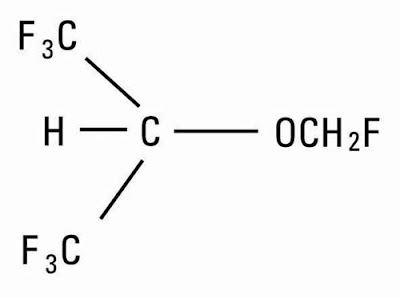Molecular Spectroscopy: Understanding The Microscopic World
 |
| Molecular Spectroscopy |
Molecular spectroscopy is a branch of spectroscopy that deals with the interactions between molecules and electromagnetic radiation. By studying the fingerprints of molecules in electromagnetic spectra, we can gain insights into their structures, dynamics and interactions. It has become a powerful analytical tool across many fields including physics, chemistry, materials science, biology and medicine.
What is Molecular Spectroscopy?
All matter interacts with electromagnetic radiation. When molecules absorb or
emit electromagnetic radiation such as infrared light, visible light or
microwave radiation, distinct characteristic spectra are produced. These
spectra contain specific patterns associated with the quantized energy levels
or resonant frequencies of a molecule. Molecular spectroscopy studies these
spectra to obtain information about molecular structure, bonding, and dynamics.
Different types of molecular spectroscopy study interactions with different
regions of the electromagnetic spectrum. Infrared spectroscopy looks at
vibrational and rotational transitions of molecules when excited by infrared
radiation. Raman spectroscopy also examines vibrational and rotational modes,
but relies on inelastic scattering of visible light. Nuclear magnetic resonance
(NMR) spectroscopy uses radiofrequency radiation to study atomic nuclei and
their environment. Ultraviolet-Visible spectroscopy investigates electronic
transitions with ultraviolet and visible light energies. Each technique reveals
valuable but distinct insights.
Applications of Molecular Spectroscopy
Molecular
Spectroscopy tools have enabled major scientific discoveries and finds
applications across chemistry, materials science, medicine and engineering.
Some key applications are highlighted below.
Identifying unknown samples: Spectroscopy is routinely used for chemical
analysis and identification of unknown materials. Characteristic spectral
fingerprints provide clues about molecular structure and composition. This is
important in fields like forensics, environmental monitoring and quality
control.
Analyzing biomolecules: Infrared and Raman spectroscopy have been indispensable
for studying biomolecules like proteins, DNA, lipids and metabolites. This
reveals how their structures dictate function in living systems. NMR
spectroscopy is similarly crucial for determining protein structures.
Drug development: Spectroscopy techniques help understand drug-receptor
interactions and metabolism pathways. NMR and infrared techniques are widely
employed in drug discovery, lead optimization and quality assurance.
Materials characterization: Spectroscopy elucidates surface composition,
crystallinity, electronic properties and defects in materials. This aids
development of new materials for applications in photonics, energy,
bioengineering and more.
Disease diagnosis: Spectroscopic methods are able to detect subtle biochemical
changes associated with diseases. Infrared and Raman signatures are being
developed as rapid diagnostic tools for cancers and other conditions.
Understanding reaction mechanisms: Time-resolved spectroscopy probes
short-lived reaction intermediates and transition states. This reveals
atomistic details of chemical, biochemical and photochemical reaction
mechanisms.
Principles of Molecular Spectroscopy
Understanding the basic principles that govern molecular spectroscopic
techniques is important for appreciating how they provide structural and
dynamic information. Here, we briefly outline some key principles illustrated
with infrared spectroscopy as an example.
Energy levels and selection rules: Molecules have discrete quantized energy
levels corresponding to vibrational and rotational states. Infrared
spectroscopy occurs due to absorption of photons matching energy gaps between
these levels. Only certain transitions are allowed by selection rules like
change in dipole moment. This enforces pattern in spectral bands.
Vibrational modes: Molecules can vibrate in different modes corresponding to
symmetric stretches, asymmetric stretches, bends etc. Each mode has
characteristic frequency that provides structural fingerprints. Multiple bonds,
functional groups have distinct bands easily recognizable.
Isotopic shifts: Presence of heavy isotopes like deuterium shifts vibrational
frequencies due to changed vibrational masses. Isotopic labeling studies help
unravel complex overlapping bands and derive structural details.
Conformational isomers: Rotational isomers with same composition but different
spatial arrangement lead to altered intramolecular interactions and subtle
spectral differences. This is exploited to elucidate conformational
preferences.
Hydrogen bonding: Hydrogen bonds cause vibrational frequency shifts and changes
in absorbance intensities. Infrared spectrum therefore reflects delicate
balance of noncovalent interactions in molecules and materials.
Practical Considerations
While molecular spectroscopy provides enormously useful insights, proper
experimental design and data analysis is necessary to extract meaningful
information. Below are some practical aspects to consider:
Sample preparation: Samples must be appropriately prepared in correct physical
state (solid, liquid or gas) and concentrated within detection limits.
Impurities and backgrounds need to be minimized.
Spectral resolution: High resolution instruments precisely map the fine
structure of ro-vibrational and electronic transitions. This resolves congested
regions and reveals subtle effects.
Temperature and pressure: Modulating experimental conditions alters populations
of molecular energy levels. This allows studying equilibrium structures,
kinetics and phase changes.
Data processing: Raw spectral data undergoes preprocessing including baseline
correction, normalization and derivatives to enhance features. Advanced
techniques like two-dimensional correlation and multivariate analysis are
employed for complex systems.
Combining techniques: Using multiple complementary spectroscopies provides more
comprehensive information than any single method. Integrated structural studies
leverage strengths of different techniques.
Quantification: Calibration allows quantification of molecular composition.
This is vital for quantification in applications like environmental monitoring
and biomedical diagnosis.
Computational modeling: Simulations help assign peaks, extract quantitative
parameters and guide experiment design. They are indispensable for interpreting
complex spectra of large biomolecules.
Get More Insights on this Topic- https://www.trendingwebwire.com/molecular-spectroscopy-understanding-the-internal-structure-of-molecules/
Explore More Trending Articles- https://masstamilan.tv/parp-inhibitors-a-promising-class-of-drugs-in-cancer-treatment/



Comments
Post a Comment